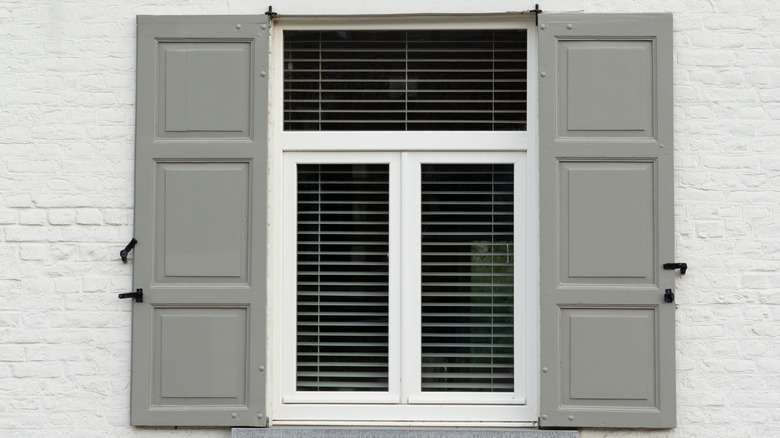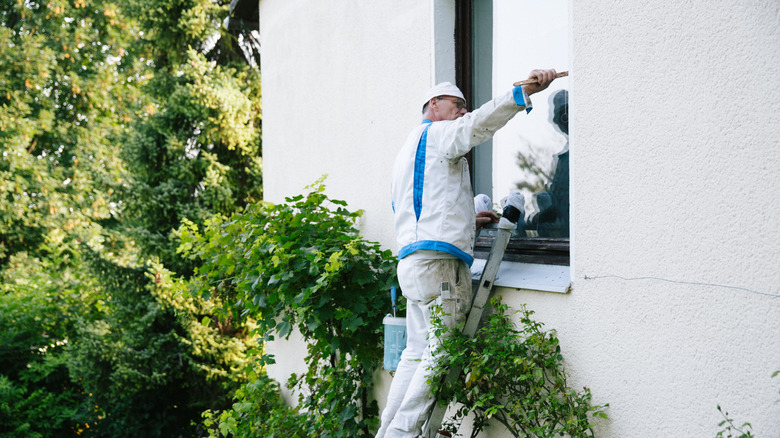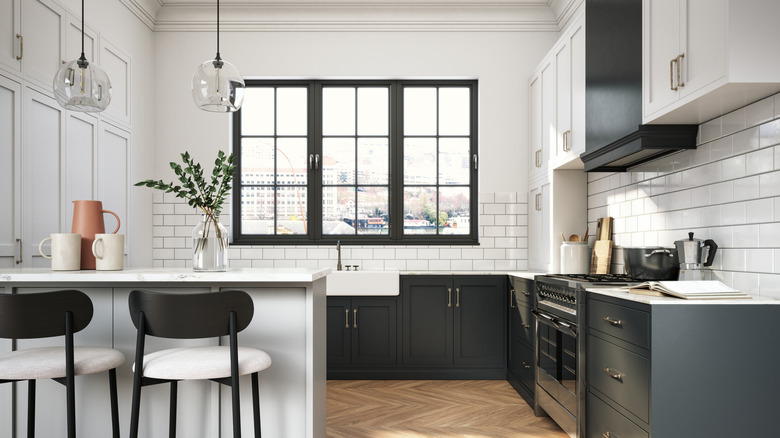The DIY Secret To Making UPVC Windows Look Way Less Harsh
UPVC windows are practical, durable, and low-maintenance, but they're not exactly known for their warmth or charm. While some brands produce UPVC windows with a few other color options, most of them have a plain white, plastic look. That bright plastic finish can feel clinical, clashing with warm, cozy interiors or period homes. If your windows look more "dentist's office" than "dream home," we've got great news. With a little paint and some DIY magic, you can transform those clinical frames into something warm and stylish. If your windows have yellowed due to prolonged UV ray exposure, you can also use paint to bring them back to life.
Essentially, painting your UPVC windows immediately improves their appearance, substituting their bland look for a more appealing and complementary hue. It's also a good way to restore faded or yellowed windows without having to replace them. The fact that you don't need to extensively renovate your windows also makes painting a cost-effective and time-saving choice. Painting is also very DIY-friendly, something you can't easily say for window installations. In fact, it's advisable to avoid DIY window installations to prevent more issues in the future.
How to paint your UPVC window
You'll need sugar soap, fine sandpaper, primer, high-quality UPVC paint, painter's tape, and a bristle brush or paint sprayer. You can either spray paint or use a hand brush/roller, but whatever your preferred method, prepping the surface of your window trim is necessary. Start by using the sugar soap to get rid of dirt, grease, and any other residue, as these could cause your paint to peel faster. Make sure to rinse and dry the trim properly, then follow it up by lightly sanding the surface before wiping it down to remove dust particles. Next, you'll want to cover the surrounding areas you don't want paint to get on, including the glass, sills, vents, walls, and so on.
Lay a thin, even coat of your primer on the UPVC window and allow it to dry for at least one hour. Some paints don't need a primer, so always check the can for any instructions. If using a hand brush/roller, start from the inside edge of the window and work outward. Apply the first coat of paint using long, smooth strokes and allow it to completely dry. Next, apply a second coat for full coverage and let it dry and cure for a full day before handling. If you're spray painting, spray with even strokes from left to right or top to bottom, keeping a 4-inch distance away from the window's surface. Apply at least two coats of this paint and allow it to cure completely before use.
Additional tips for a long-lasting paint job
Choosing the right paint finish is necessary for improved appearance and durability of your UPVC windows. It's a good idea to use satin paint for a low-sheen, modern finish that hides minor imperfections without being overly flat or glossy. And if you're wondering whether to spray or use a brush for your project, well, it depends. Spray paint delivers a factory-style finish quickly but demands skill and extensive masking because it's easy to overspray. Hand-painting is more forgiving for beginners but requires patience to avoid brush marks. You can embrace the brush marks to give your UPVC windows some character and make them look less plastic. For hand brushes, always opt for the soft-bristled types that allow precise painting and even strokes.
It's always a good idea to do your painting on days that aren't humid or rainy and make sure the area is well-ventilated. Always wear a gas mask when painting, especially with spray paint. You can use dust sheets or plastic to cover patios, driveways, and walls before painting windows close to them. After painting, clean the windows regularly using gentle solutions like mild soap and water. Avoid using bleaches or solvent-based cleaners because they could react chemically with the plastic. You should also avoid high-pressure washers so you don't end up peeling the paint.


